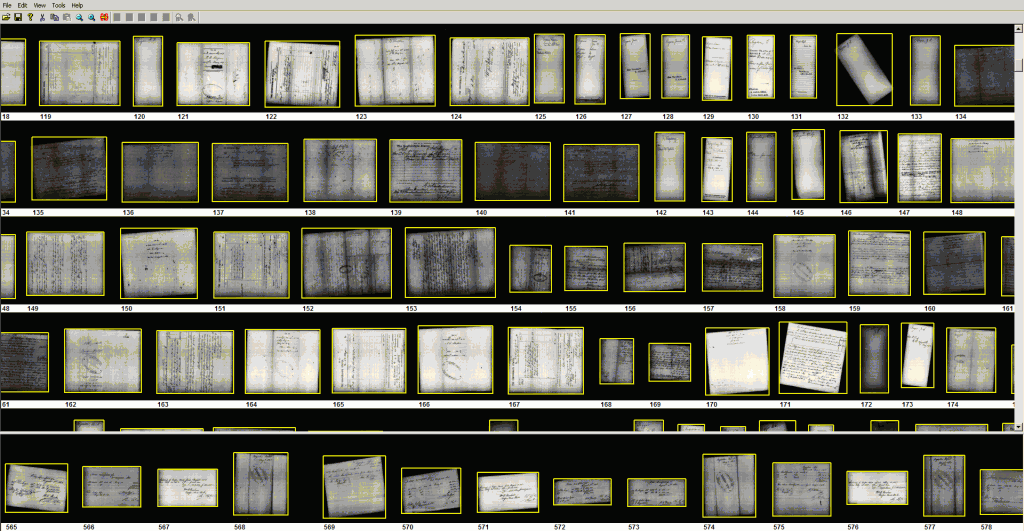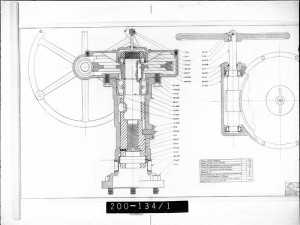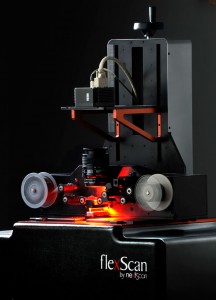Quality Microfilm Scanning
 For microfilm scanning, Creekside Digital proudly uses USA-manufactured NextScan equipment – the best microfilm scanners in the world. NextScan invented “ribbon scanning,” the process by which a roll of film is scanned in its entirety (including all the spaces between the frames), with quality control being performed by a human operator AFTER the roll is initially captured. We ribbon-scan all the microfilm that we process, which allows us to guarantee that every roll and sheet we digitize is captured 100% completely, and that there are no skipped frames, improperly cropped pages, etc. in the images we deliver to our customers.
For microfilm scanning, Creekside Digital proudly uses USA-manufactured NextScan equipment – the best microfilm scanners in the world. NextScan invented “ribbon scanning,” the process by which a roll of film is scanned in its entirety (including all the spaces between the frames), with quality control being performed by a human operator AFTER the roll is initially captured. We ribbon-scan all the microfilm that we process, which allows us to guarantee that every roll and sheet we digitize is captured 100% completely, and that there are no skipped frames, improperly cropped pages, etc. in the images we deliver to our customers.
We offer microfilm scanning, microfiche scanning, and aperture card scanning for:
- Libraries, Archives, and Historical Societies
- Institutional and Corporate customers
- School Districts and Universities
- Law firms and Litigation service companies
- Engineering and Aerospace customers
Not sure what you’ve got? You may want to read “What Kind of Microfilm do I Have?”
The Microfilm Scanning Process
Most microfilm scanners try to output images “on the fly” as the film or fiche passes through the machine. This only gives the scanner a single opportunity to perform its frame detection (the process during which the machine recognizes individual frames on a section of film and segments them into separate image files) as well as other necessary computer-intensive tasks such as deskewing / cropping, sharpening, etc. If there is a change in the density of the film (the difference between the lightest and darkest images), an image may be cut in half by a misfiring frame detection process or even skipped entirely. “Fixing” these types of mistakes requires the identification of a skipped frame (no easy task on a roll containing thousands of images), finding it on the physical roll (even harder), rescanning it properly, and manually inserting / replacing the rescans in the original batch of images – a very time-consuming and expensive proposition, which is why most service bureaus cut corners and don’t do it.
By capturing each roll of microfilm as a contiguous “ribbon” which includes all the empty spaces between the frames on the film as well as the frames themselves, Creekside Digital is able to perform frame detection as many times as required in order to perfectly capture every frame on the roll. Frame boundaries can even by redrawn by the operator by simply dragging them with a mouse. Our operators spend the majority of their time QAing and tweaking images BEFORE they’re output (not after), so there are no mistakes to correct in the final images. We get it right the first time, and guarantee that we correctly capture 100% of the frames on every roll of film sent to us.

Viewing a 16mm NARA Ribbon After Microfilm Scanning — Yellow Boxes Indicate Individual Images to be Output
For an in-depth look at the Ribbon Scanning process and its advantages over traditional microfilm scanning, please read the PDF file NextStar with Ribbon Scanning: The Film Conversion Approach of the 21st Century available on the NextScan website.
Microfilm Scanning Options
Color Depth
- Bitonal (black and white)
- 256-Color Grayscale (better preserves fine details like handwriting, rubber stamps, and photographs)
Resolution
- 100 – 600 dpi true optical resolution (depending on application)
Processing
- Crop / Deskew
- Rotate to Proper Orientation
- Black Border Removal
- Split 2-up frames into individual pages
- Preserve / Remove backer board or Blip Counter digits
Image File Formats
- PDF
- Image-only or searchable OCR with invisible text under the image
- Multipage or one file per image
- JPEG
- JPEG2000
- Uncompressed lossless 8-bit TIFF (archival Digital Master file, meeting or exceeding all CDL and NDNP specs)
- TIFF Group IV bitonal
Affordable Pricing via LYRASIS
For over ten years, Creekside Digital has offered our true preservation-class microfilm scanning services to libraries and other cultural heritage institutions across the United States via the LYRASIS Digitization Collaborative. For one low per-frame price, LYRASIS members receive:
- 300-400dpi archival master TIFF (8-bit grayscale, uncompressed), cropped and deskewed to NDNP guidelines
- JPEG2000 lossy derivative
- Searchable PDF with hidden text
- Text file of OCR output
Various options are available on microfilm and microfiche projects, including 2-up splitting, organization of output images by book / issue / volume, and metadata such as METS / ALTO structural XML and fully NDNP-compliant, DVV2-verified assets. For more information regarding Creekside Digital’s preservation-class microfilm scanning services available through LYRASIS, including pricing and eligibility details, please contact Hannah Rosen, LYRASIS Strategist for Research and Scholarly Communications, at (800) 999-8558 x2918, or email her at hannah.rosen@lyrasis.org.




